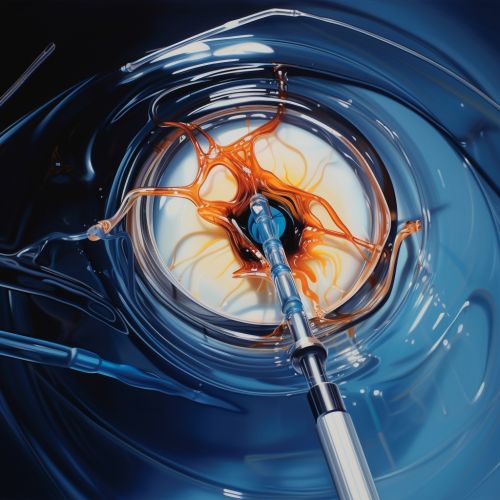Ophthalmic catheters
Introduction
Ophthalmic catheters are specialized medical devices used in the field of ophthalmology for various diagnostic and therapeutic procedures. They are designed to be inserted into the eye or its surrounding structures to facilitate the delivery of medications, fluids, or to perform surgical interventions.
Types of Ophthalmic Catheters
There are several types of ophthalmic catheters, each designed for specific applications and procedures.
Intravitreal Catheters
Intravitreal catheters are used to deliver medications directly into the vitreous humor, the clear gel that fills the space between the lens and the retina of the eye. This method of drug delivery is often used in the treatment of conditions such as age-related macular degeneration, diabetic retinopathy, and retinal vein occlusion.
Retinal Detachment Catheters
Retinal detachment catheters are used in the surgical repair of a detached retina. These catheters are used to inject a gas or silicone oil into the vitreous cavity to reposition the retina back to its normal location.
Glaucoma Drainage Catheters
Glaucoma drainage catheters, also known as glaucoma shunts or tubes, are used to relieve intraocular pressure in patients with glaucoma. These devices create a new pathway for the aqueous humor to exit the eye, thereby reducing pressure.


Materials and Design
Ophthalmic catheters are typically made from biocompatible materials such as silicone or polyurethane. The choice of material is critical as it must be non-reactive, flexible, and durable. The design of the catheter often includes a lumen (or multiple lumina) for the passage of fluids or gases, and a tip that is designed for easy insertion and minimal trauma to the eye tissues.
Procedure
The procedure for inserting an ophthalmic catheter will vary depending on the type of catheter and the specific procedure being performed. However, all procedures involving ophthalmic catheters require a high degree of skill and precision to avoid damaging the delicate structures of the eye.
Complications
While ophthalmic catheters are generally safe and effective, they are not without risks. Potential complications can include infection, bleeding, retinal detachment, cataract formation, and changes in intraocular pressure.
Future Developments
The field of ophthalmic catheters continues to evolve with advancements in material science and medical technology. Future developments may include catheters with integrated sensors for real-time monitoring of intraocular pressure or drug delivery systems that can provide sustained release of medications.
